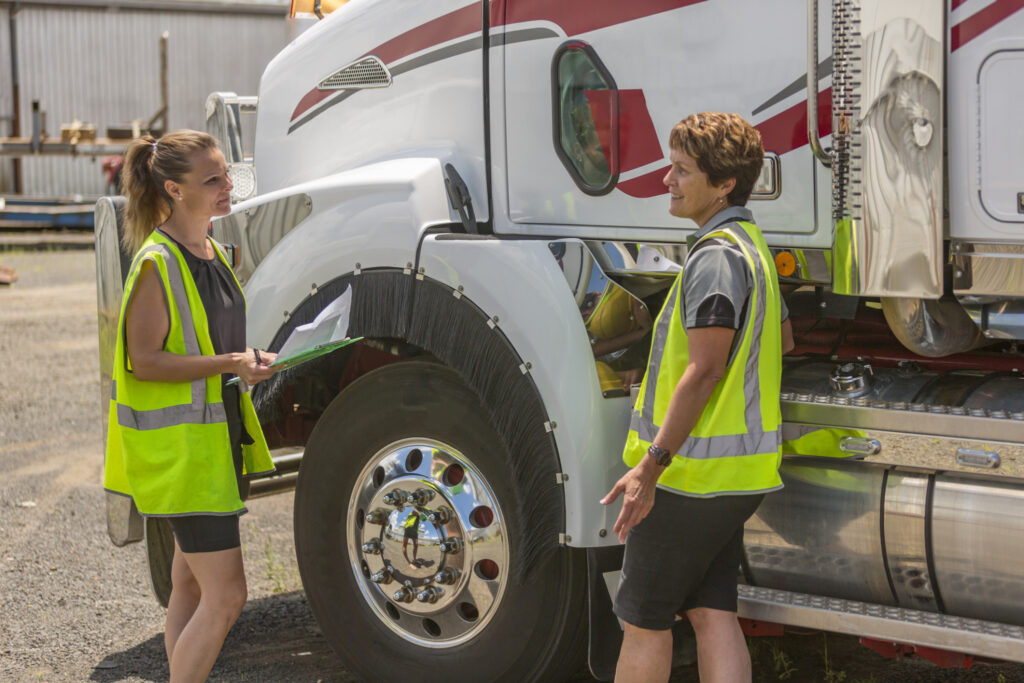U.S. advisory board looks to attract more women to trucking
The U.S. Federal Motor Carrier Safety Administration (FMCSA) has launched a 16-member advisory group that will focus on finding ways to recruit, retain and support women in the trucking industry.
The Women of Trucking Advisory Board (WOTAB), part of the Biden-Harris Trucking Action Plan, will evaluate barriers and trends within the industry; advise on policies to educate, mentor, train and reach out to women in the industry; and identify opportunities to expand their roles in trucking and enhance the job quality.

“America needs truck drivers like never before, yet women, half the American people, have long been underestimated and underrepresented behind the wheel and in jobs across this sector,” U.S. Transportation Secretary Pete Buttigieg said in a press release.
Ellen Voie, CEO and president of the Women in Trucking Association (WTA), says that the industry has seen a steady increase of female professionals compared to several years ago. But women still account for just 24% of all U.S. transportation jobs, according to Robin Hutcheson, FMCSA’s deputy administrator.
The WTA’s 2022 gender diversity study indicates women are better represented in office roles such as talent management, safety and dispatcher roles. While women account for nearly 75% of HR roles in trucking, they represent just under 14% of drivers and fewer than 4% of technicians.
The 16 women on the board come from 11 states and hold different positions in small, medium and large fleets, organizations, associations and higher education institutions. Nine members are current or former CMV drivers and the rest are independent owner-operators, trainers, authors, and executives.
Workplace cultures
While job images stop women from getting into trucking, concerns about safety make them leave, Voie says.
“If they [women] don’t feel safe, they leave right away,” she said. Women who participated in a survey for WTA’s 2022 recruiting guide were asked to evaluate how safe they feel. On a scale of one to 10, the average response was 4.4, identifying a need to improve safety cultures.
She explains safety culture involves three areas: truck maintenance, locations where drivers work, and comfort about raising concerns with fleet managers.
Many companies do not provide accommodating working environments for women, Voie says.
Whether that involves denying access to the washrooms or not providing properly fitted uniforms, she says companies do not pay attention to gender differences. These factors also come into play when it comes to inclusion and employing people from LGBTQ2S+ communities, including transgender women.
“This industry is not as inclusive as it could be,” Voie said.
She added recruiting and retention could benefit from implementing same-gender training policies since newly hired drivers are often required to spend days and weeks with their instructors to prove or improve their skills. The proximity of the sleeper berth and personal quarters compromises privacy, and no other mode of transportation mixes women and men in sleeping and personal activity areas, Voie said.
Have your say
This is a moderated forum. Comments will no longer be published unless they are accompanied by a first and last name and a verifiable email address. (Today's Trucking will not publish or share the email address.) Profane language and content deemed to be libelous, racist, or threatening in nature will not be published under any circumstances.
There are a lot of single moms in the United States. It’s not very practical for these women to go trucking OTR. BEING away from children I believe is one reason why women are not waiting in line. I think if more companies offered local work with a set start and stop time these moms would consider driving.